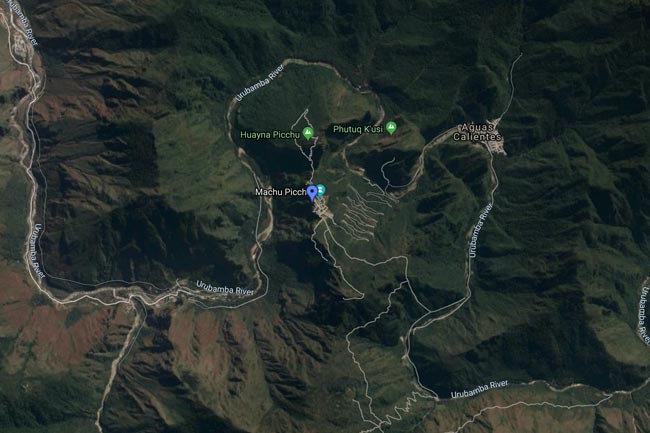Machu Picchu in Peru
Machu Picchu in Peru
Most seasoned travelers agree that Machu Picchu in Peru is the world’s most dramatic ruins. It sits boldly perched on a steep sided mountain saddle far above the partially encircling Urubamba River gorge.
What remains of the precision stonework of the pre-Colombian Inca temples and palaces clearly reveals how exalted Machu Picchu was in its glory days.
The location of Machu Picchu is 70 mi (112.5 km) northeast of the city of Cusco, at 7,890 ft (2,400 m) above sea level, within the Machu Picchu Archaeological Park, which comprises a large area of the province of Urubamba in the Cusco Department. It is surrounded by a huge forest of majestic mountains.

The surface of the Archaeological Park, including the urban and agricultural areas, covers a total of 32,592 hectares. It is located on the eastern slopes of the Cordillera de Vilcabamba mountain range bordering the rivers Apurimac and Urubamba.
It is located at 13 ° 9 ’47 “South latitude and 72 ° 32′ 44” W, in the province of Urubamba. The nearest major city is Cusco.
The Inca archaeological site is located halfway between the tops of two mountains, Machu Picchu Mountain and Huayna Picchu, about 490 yards (450 meters) above the valley floor. At the bottom of the hills is the Vilcanota-Urubamba River.
Machu Picchu Montana and Huayna Picchu are part of a larger formation known as orographic Vilcabamba Batholith, in the Central Cordillera of the Peruvian Andes. They are located on the left bank of the Urubamba Canyon, formerly known as Quebrada de Picchu. The biogeographical classification of this region is the Peruvian Yungas ecoregion.
The Machu Picchu UNESCO Historic Sanctuary spreads over an area of 32,592 hectares. Within this protected zone are important ecological regions, including the Andean grasslands, tall dwarf forests, and the high forest (or yunga), including cloud forest and mountain brow. This immense diversity of habitat, at the same time, has led to an amazing assortment of flora and fauna.
The climate of Machu Picchu is mild throughout the year, quite rainy between November and March, and dry and warm from April to October. Read more about Machu Picchu Weather.
Options to get to Machu Picchu is limited due to the remote location of the archaeological complex. There are no connecting roads to drive a car from Cusco to Machu Picchu. Taking the train or doing a hike are the only options. Aguas Calientes, the gateway town to Machu Picchu, is located down the hill from the main access to the archaeological complex. Here, you can catch the 20 minute bus shuttle up to the main visitor entrance and stay the night in one of the many hotels.
Learn more about the Best Time to Visit Machu Picchu.
Are you up for an adventure? Check out the Inca Trail to Machu Picchu.
